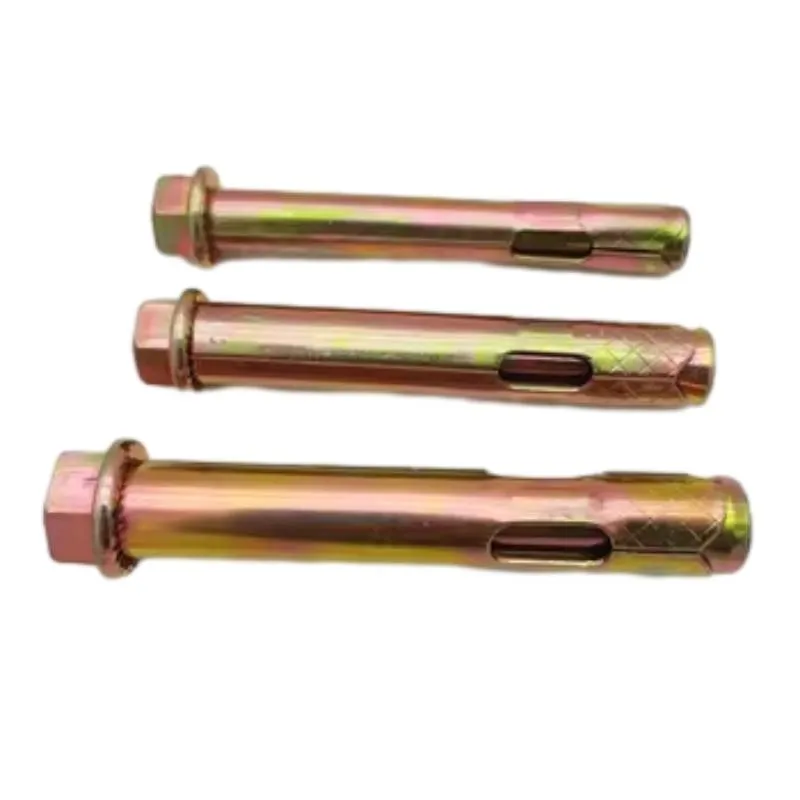des. . 07, 2024 12:40 Back to list
cutting a threaded rod
Cutting a Threaded Rod A Step-by-Step Guide
When it comes to DIY projects or professional machining tasks, cutting a threaded rod is a common requirement. Threaded rods, which are long metal rods with continuous threads, are versatile components used in various applications including fastening, construction, and repair. This article will guide you through the process of cutting a threaded rod safely and efficiently.
Understanding the Tools Needed
Before you begin cutting a threaded rod, it is essential to gather the right tools. Here’s a list of the items you’ll need
1. Measuring Tape Accurate measurements are crucial. 2. Marker or Scribe For marking your cut line. 3. Protective Equipment Safety glasses and gloves to protect against metal shards. 4. Cutting Tool Options include a hacksaw, band saw, or even a power tool like an angle grinder. 5. Clamps To secure the rod in place while cutting. 6. File or Grinder For smoothing cut edges.
Step-by-Step Cutting Process
1. Measure and Mark Start by measuring the length of the threaded rod that you need. Use a measuring tape to get an accurate measurement, and then mark the cut line using a marker or scribe. Ensure that the mark is clear and precise to avoid mistakes during cutting.
2. Secure the Rod Place the threaded rod on a stable surface such as a workbench. Use clamps to secure the rod, making sure it is held firmly in place. A stable setup is essential for a clean cut and to ensure your safety.
3. Choose the Cutting Method Decide on a cutting method based on the tools available and the thickness of the rod. For most DIY purposes, a hacksaw is sufficient. If you are cutting a thicker rod and have access to power tools, an angle grinder or a band saw will make the task quicker and easier.
cutting a threaded rod

4. Cut the Rod Begin the cutting process. If you are using a hacksaw, apply even pressure and let the saw do the work. Keep a steady rhythm and avoid forcing the blade, which can lead to uneven cuts or damage to the blade. If using an angle grinder, maintain a steady hand and be cautious of sparks.
5. Smooth the Edges Once the rod is cut, the threaded end may have sharp edges. Use a file or grinder to smooth out any rough edges carefully. This step is important as sharp edges can be hazardous and may cause injury during handling.
6. Clean Up After cutting, clean the workspace and dispose of any metal shavings or debris safely. Check the cut rod to ensure it meets your requirements and remeasure if necessary.
Safety Considerations
Safety should always be a priority when working with tools and metal. Always wear protective goggles to safeguard your eyes from metal shavings, and gloves to protect your hands. If you are using power tools, ensure that you are familiar with their operation and follow all safety guidelines.
Final Thoughts
Cutting a threaded rod might seem like a simple task, but doing it correctly involves careful planning and the right technique. By following the steps mentioned above, you can achieve a clean and accurate cut while ensuring your safety. Threaded rods are invaluable in various applications, and knowing how to cut them properly can enhance your skills as a DIY enthusiast or professional. So the next time you find yourself needing to modify a threaded rod, you’ll know exactly what to do!
By being methodical and precise, you will not only complete your tasks more effectively but will also enjoy the satisfaction of a job well done. Whether for home improvement, crafting, or mechanical projects, mastering the art of cutting a threaded rod adds a valuable skill to your toolbox.


